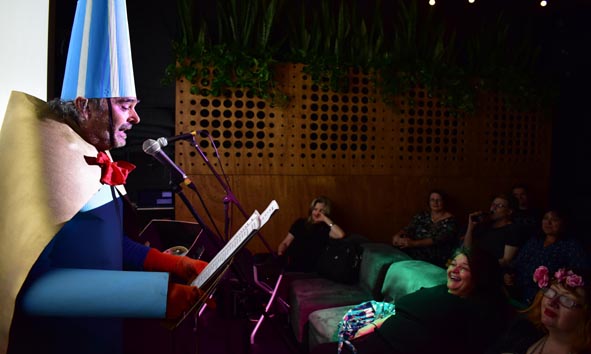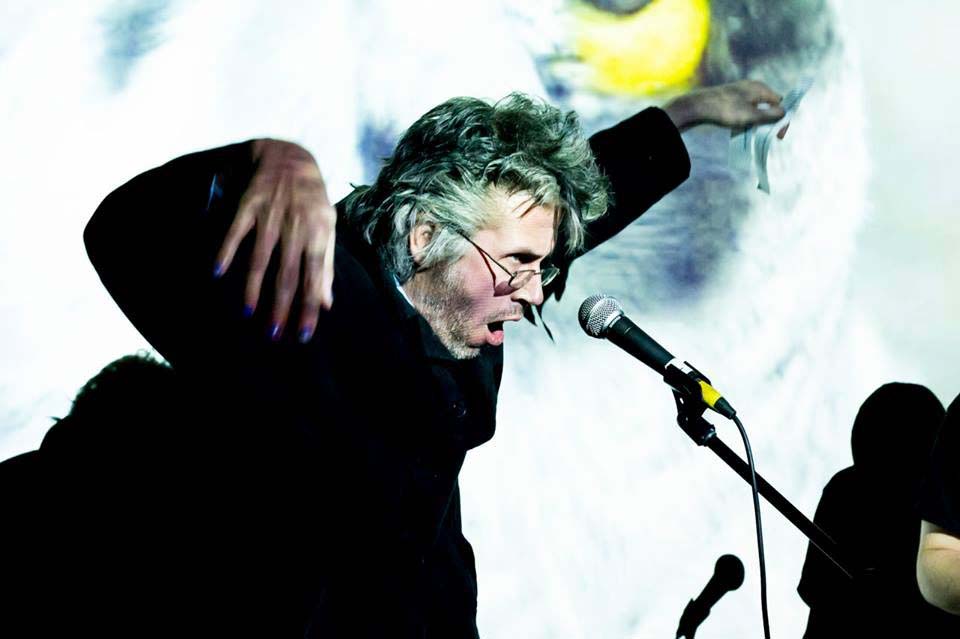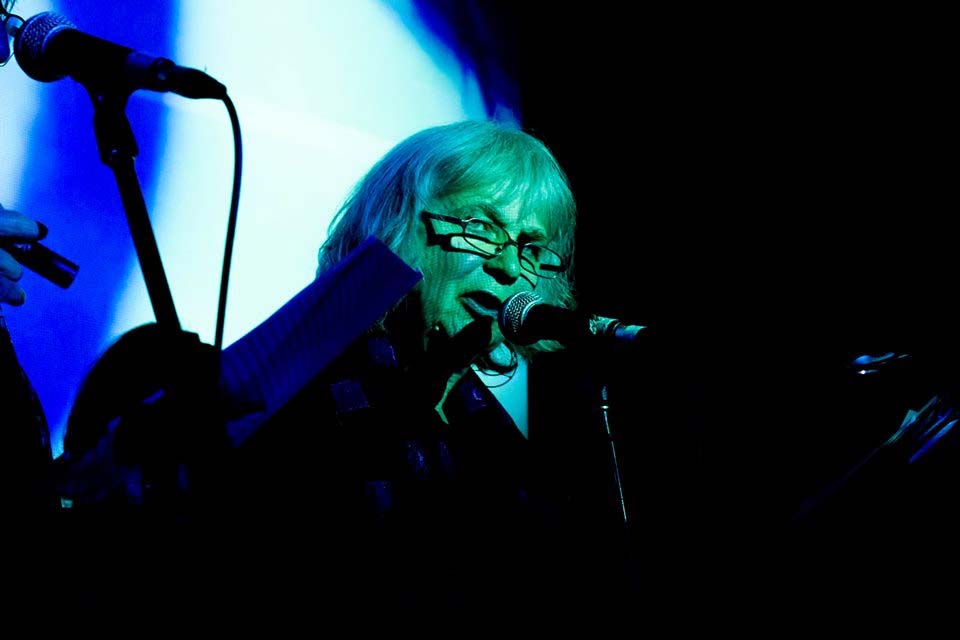Aspiring to Birdsong
Explorations in Soundpoetry
Recapturing a more primitive form of language, before communication by expressive
sounds became stereotyped into words, when the voice was richer in vibrations,
more mightily physical.
A series of performances exploring sound and other experimental
forms of poetry, as a current practice but also with a glance back at the
past.
The next event will take place on Saturday afternoon the 5th of October at
the Dan O'Connell Hotel 225 Canning St, Carlton
Some images here of the first event on the 11th of Feb 2019
Photos by Jeltje Fanoy

Click here for a short movie
Featuring Eddie Burger, UQ, Anna Fern and Shane van den Akker
________________
Some images here of the secondevent on the 29th of April 2019
Photos by Jeltje Fanoy

Click here for a short movie
Featuring Kylie Supsky, Reverse Butcher, UQ, The Bitter Disapointments and
Ashley Higgs
________________
Some images here of the third event on the 19th of Julyl 2019
As part of the Melbourne Spoken Word Festival
Photos by Brendan Bonsack

Click here for a short movie
Featuring Jeltje (channeling theWomen Beat Poets), UQ, Eddie Burger, Anna
Fern, and Peter Murphy
_______________
Some images here of Birdsong 4 at the Dan O'Connell
Photos by Jeltje Fanoy

Featuring Jeltje, UQ, Eddie Burger, Peter Murphy and Anna Fern
We Aspire to Bird Song:
Leonardo da Vinci asked the poet to give him something he
might see and touch and not just something he could hear. Sound poetry seems
a to me to be achieving this aim. PARTLY it is a recapturing of a more primitive
form of language, before communication by expressive sounds became stereotyped
into words, when the voice was richer in vibrations, more mightily physical.
The tape-recorder, by its ability to amplify and superimpose, and to slow
down the vibrations, has enabled us to rediscover the possibilities of the
human voice, until it becomes again something we can almost see and touch.
Poetry has gone beyond the word, beyond the letter, both aurally and visually
... Sound poetry dances, tastes, has shape. MY USE of 'vocal-microparticles'
as Henri Chopin calls the elements with which we now compose sound poetry,
retains, indeed emphasises, the natural quality of the human voice, more perhapsthan
does Chopin's poetry. But both he and I are attempting to use a new means
of communication which I believe is an old method re-established, which is
more natural more direct and more honest than, for example, the present day
voice of politics and religion ... Gone is the word as the word, though the
word may still be used as sound or shape. Poetry now resides in other elements.
We are aided in our search by sophisticated instruments, the microphone
and the tape-recorder. Our human voices extend the range of the tape-recorder's
abilities by their demands upon it. Conversely, the tape-recorder's treatment
of the voice teaches the human new tricks of rhythm and tone, power and subtlety.
We are in a position to claim a poetry which is musical and abstract; but
however hard we try to do so can we escape our intellect? In the poetry of
pure sound, yes.... Materials are the micro-particles of the human voice which
amplified, possibly transposed in speed or pitch, superimposed one, two or
many times, treated perhaps with a filter, echo or chopper, shaped maybe by
editing, result in a piece no naked voice could achieve.
Bob Cobbing 1969